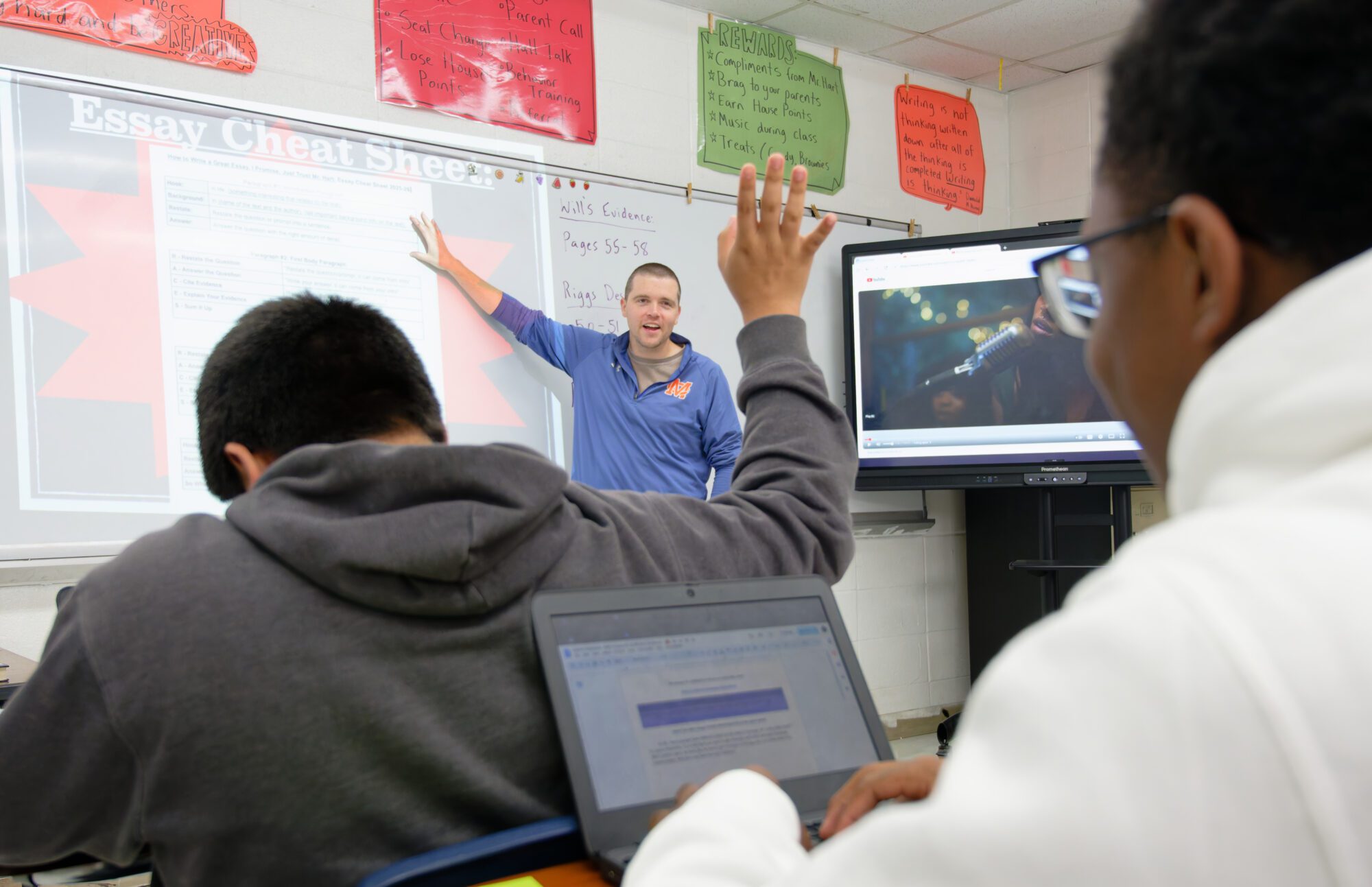Report on New Principal Appointment at Fountain Hill Elementary School
Introduction
The Bethlehem Area School District (BASD) has appointed Ms. Elise M. Jones as the new principal of Fountain Hill Elementary School. This appointment reflects the district’s commitment to advancing the United Nations Sustainable Development Goals (SDGs), particularly SDG 4 (Quality Education), SDG 10 (Reduced Inequalities), and SDG 17 (Partnerships for the Goals).
Professional Profile and Qualifications
Ms. Jones brings over 15 years of public education experience to the role. Her qualifications and background are well-aligned with the objectives of fostering high-quality, inclusive learning environments.
- Leadership Experience: Former principal at Easton Area Middle School and Paxinosa Elementary School; experience as an assistant principal at both elementary and middle school levels.
- Educational Background: Master’s degree in Educational Leadership from Wilkes University; Bachelor’s degree in Psychology with elementary education certification from Moravian University.
Alignment with Sustainable Development Goals (SDGs)
Ms. Jones’s professional experience and stated objectives demonstrate a strong alignment with several key SDG targets.
SDG 4: Quality Education
Her leadership is poised to directly impact the district’s progress toward ensuring inclusive and equitable quality education.
- Inclusive and Safe Learning Environments (Target 4.a): A core component of her career has been the creation of positive, safe, and supportive school cultures. Her expertise in trauma-informed practices is critical for building learning environments that are inclusive and effective for all students.
- Equitable Educational Outcomes (Target 4.5): Ms. Jones has a documented history of implementing initiatives focused on closing achievement gaps. This work directly supports the goal of eliminating disparities in education and ensuring equal access for all learners.
- Foundational Skills (Target 4.1): Her strong background in literacy instruction is fundamental to ensuring all students acquire the foundational skills necessary for future learning and success.
SDG 10: Reduced Inequalities
The new principal’s focus on inclusive education and addressing achievement gaps contributes to the broader goal of reducing inequalities within and among communities.
- Her student-centered leadership style and commitment to inclusive practices aim to ensure that every child, regardless of background, has the opportunity to achieve their full potential.
SDG 17: Partnerships for the Goals
Ms. Jones’s emphasis on community and family engagement is a practical application of building partnerships to achieve sustainable development objectives.
- A key priority in her new role is to build strong relationships within the Fountain Hill community.
- Her strategy includes robust family engagement, recognizing that collaboration between the school and families is essential for student success.
Future Objectives for Fountain Hill Elementary
Under Ms. Jones’s leadership, the school will focus on several key areas that reinforce the district’s commitment to the SDGs:
- Enhancing academic growth for all students.
- Strengthening inclusive practices to support diverse learners.
- Fostering a strong sense of belonging among students.
- Maintaining high expectations within a supportive framework.
- Actively engaging families and the community as partners in education.
Analysis of Sustainable Development Goals in the Article
-
Which SDGs are addressed or connected to the issues highlighted in the article?
The primary Sustainable Development Goal (SDG) addressed in the article is:
- SDG 4: Quality Education – This goal aims to “ensure inclusive and equitable quality education and promote lifelong learning opportunities for all.” The article is entirely focused on the appointment of a new principal for an elementary school and her commitment to improving the educational environment. The discussion of her experience, leadership style, and planned initiatives directly relates to enhancing the quality and inclusivity of education at the local level.
-
What specific targets under those SDGs can be identified based on the article’s content?
Based on the article’s details about the new principal’s priorities and background, the following specific targets under SDG 4 can be identified:
- Target 4.1: By 2030, ensure that all girls and boys complete free, equitable and quality primary and secondary education leading to relevant and effective learning outcomes. The article connects to this target through the principal’s focus on elementary education and her implementation of initiatives aimed at “closing achievement gaps” and promoting “academic growth,” which are essential for achieving effective learning outcomes.
- Target 4.5: By 2030, eliminate gender disparities in education and ensure equal access to all levels of education and vocational training for the vulnerable. The principal’s commitment to “inclusive practices,” “inclusive education,” and “trauma-informed practices” directly addresses the need to ensure that all students, including those who may be vulnerable, have equal opportunities to succeed.
- Target 4.a: Build and upgrade education facilities that are child, disability and gender sensitive and provide safe, non-violent, inclusive and effective learning environments for all. This target is strongly supported by the principal’s stated commitment to “maintaining safe, supportive, and engaging learning environments for all students” and her focus on creating “positive school cultures.”
-
Are there any indicators mentioned or implied in the article that can be used to measure progress towards the identified targets?
The article does not mention official, quantitative SDG indicators. However, it implies several qualitative and programmatic indicators that could be used to measure progress towards the identified targets:
- For Target 4.1 (Quality Education & Outcomes):
- Implied Indicator: The implementation and success of initiatives focused on “closing achievement gaps.” Progress would be measured by a reduction in performance disparities among student groups.
- Implied Indicator: The rate of “academic growth” among students, which can be tracked through school-level assessments.
- Implied Indicator: The strengthening of “literacy instruction,” with progress measured by improvements in student literacy rates.
- For Target 4.5 (Equal Access & Inclusivity):
- Implied Indicator: The adoption and integration of “inclusive practices” and “inclusive education” policies within the school.
- Implied Indicator: The implementation of “trauma-informed practices” to support vulnerable students.
- For Target 4.a (Learning Environments):
- Implied Indicator: The establishment of “partnerships with families and communities” and the level of “family engagement,” which contribute to a supportive learning ecosystem.
- Implied Indicator: The creation and maintenance of “positive school cultures” where students have a “sense of belonging.”
- For Target 4.1 (Quality Education & Outcomes):
-
SDGs, Targets, and Indicators Table
SDGs Targets Indicators (Implied from the article) SDG 4: Quality Education 4.1 Ensure equitable and quality primary education and effective learning outcomes. - Initiatives focused on “closing achievement gaps.”
- Emphasis on “academic growth.”
- Strong background in “literacy instruction.”
SDG 4: Quality Education 4.5 Ensure equal access to all levels of education for the vulnerable. - Commitment to “inclusive practices” and “inclusive education.”
- Implementation of “trauma-informed practices.”
SDG 4: Quality Education 4.a Provide safe, inclusive, and effective learning environments for all. - Commitment to “maintaining safe, supportive, and engaging learning environments.”
- Focus on creating “positive school cultures.”
- Efforts in “building partnerships with families and communities.”
Source: lehighvalleylive.com







